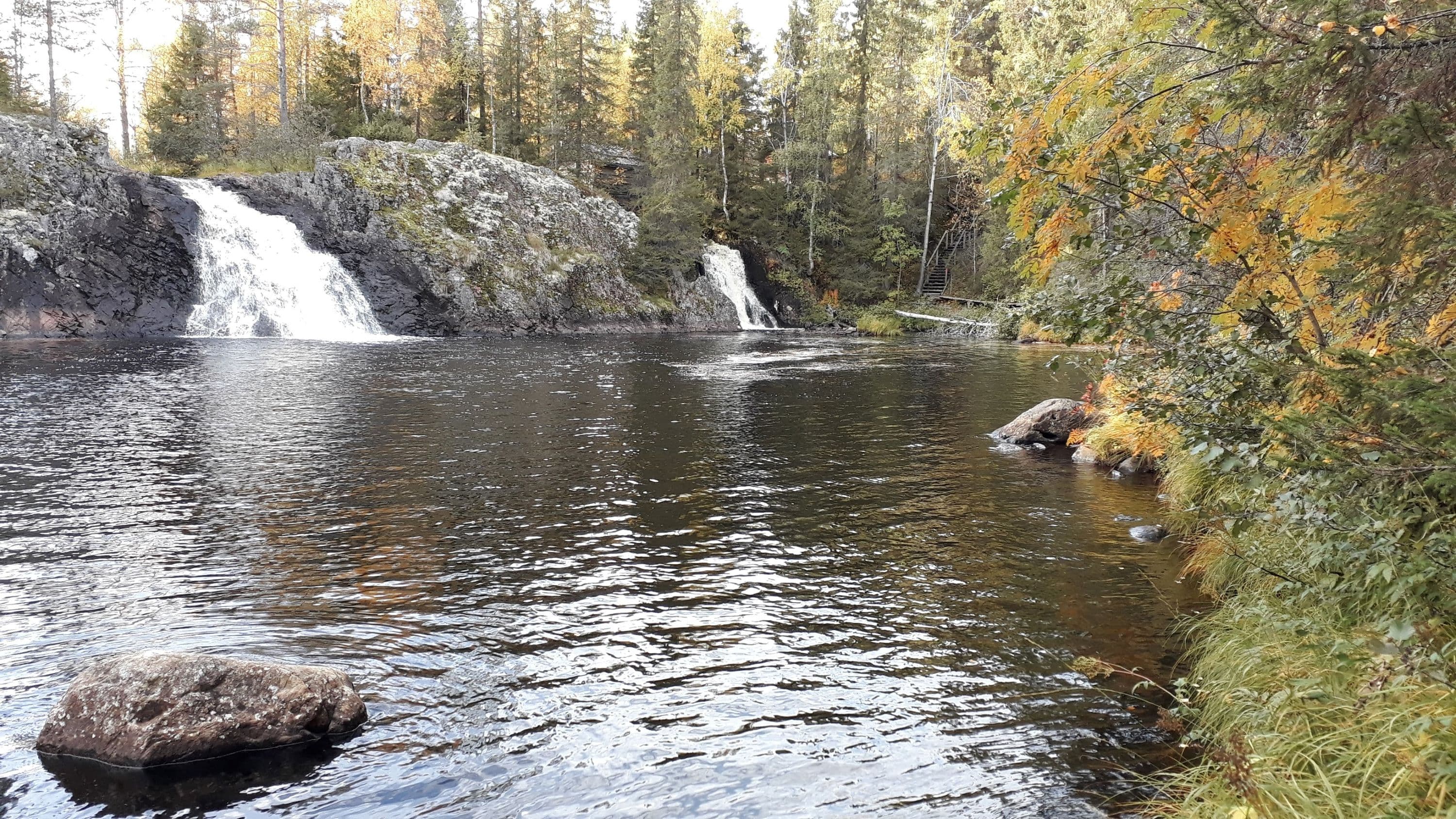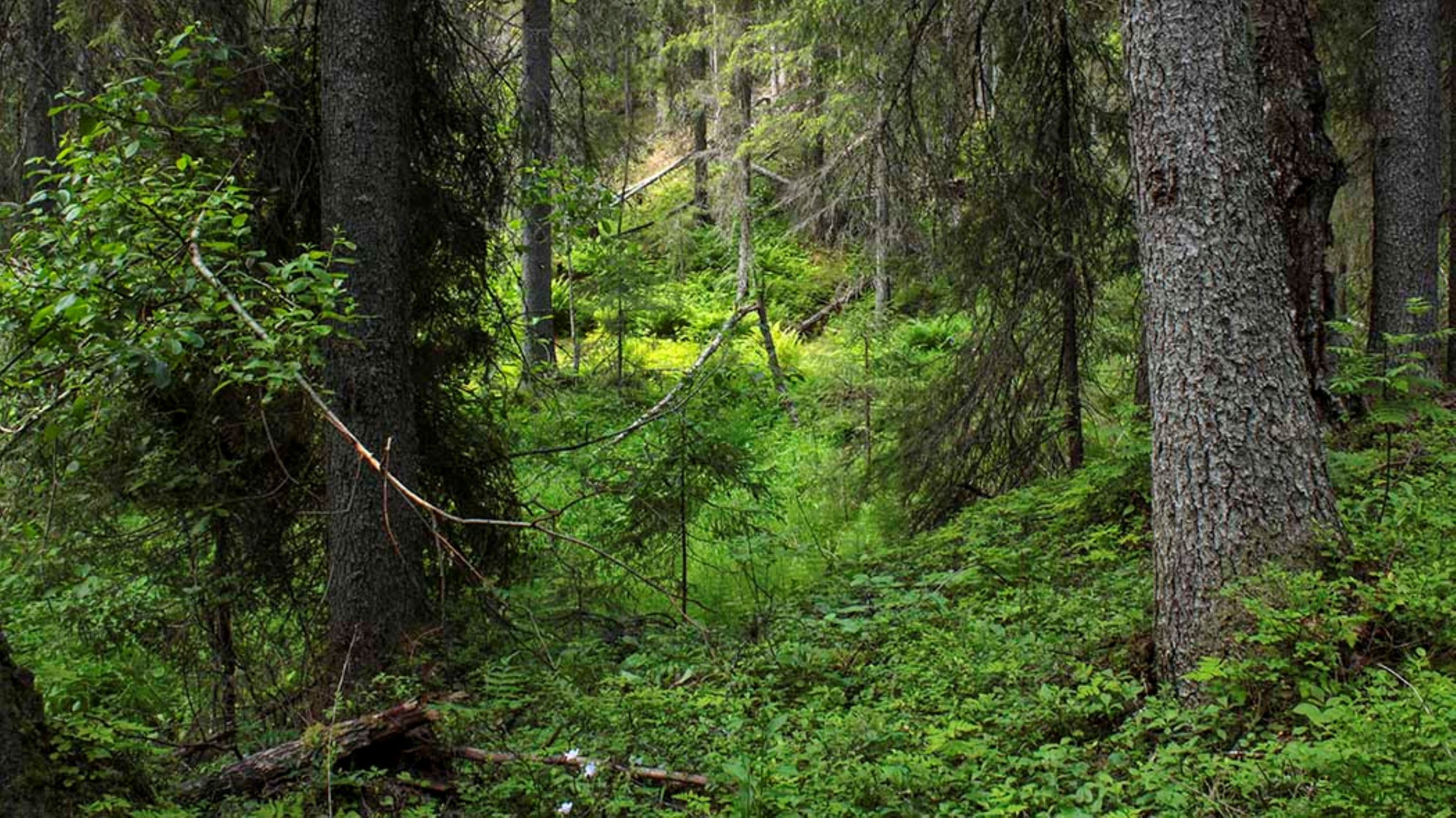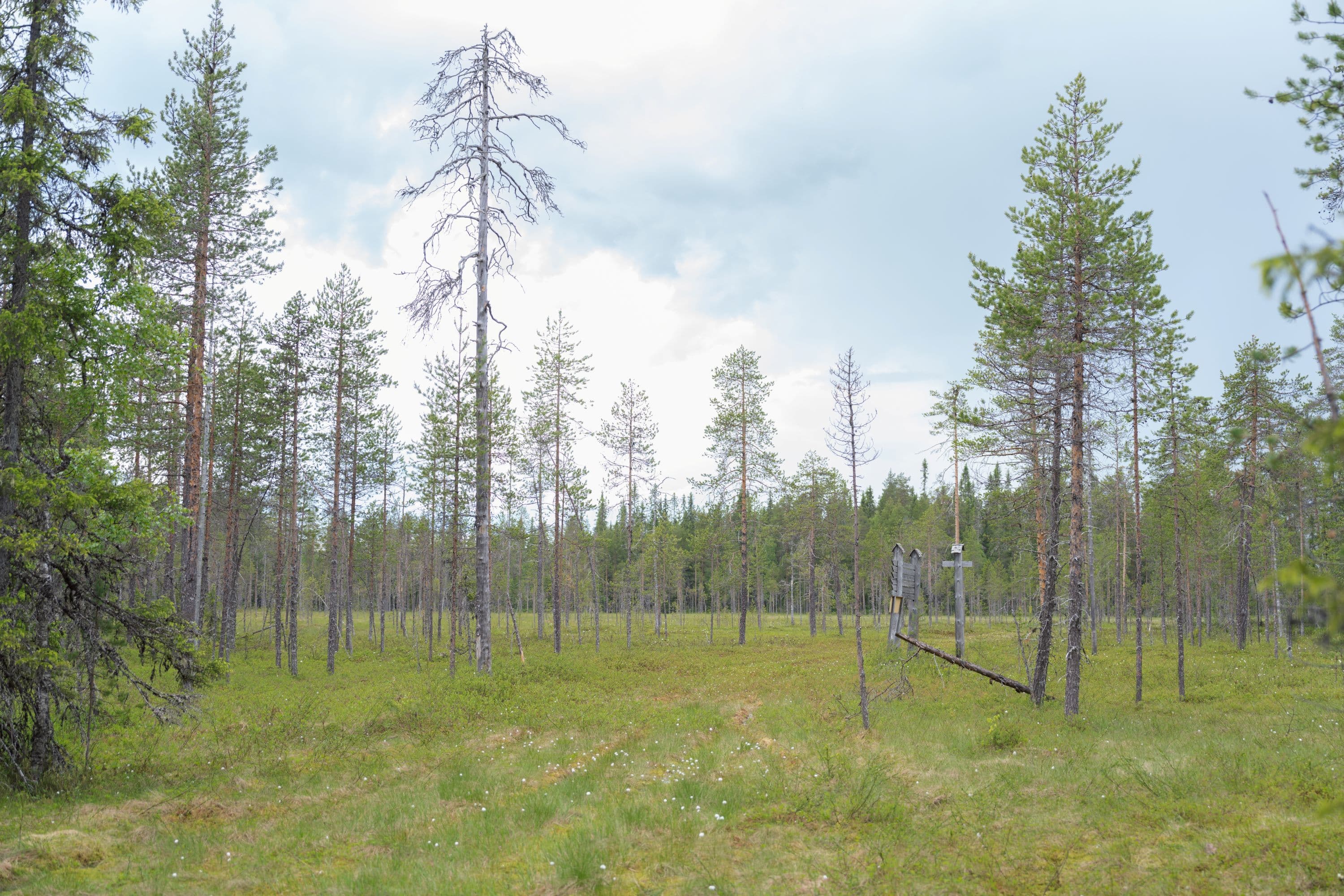The Vorlokki Old-Growth Forest Protection Area lies in Kainuu, adjacent to the Ukkohalla ski resort. Ukkohalla’s ski trails, along with other marked routes in the area, lead into the forests of the protection area. At the heart of Vorlokki is Pieni Tuomivaara, cloaked in spruce-dominated mixed forests. The most striking natural formation in the protection area is the Vortikka Gorge, a rock crevice roughly 500 metres long, with nearly vertical cliff walls. Vorlokki forms part of the Natura 2000 network.
For hiking routes in the Vorlokki area, a convenient starting point is the Ukkohalla ski resort. The Komulanköngäs car park, located along Hallanmaantie about 3 km from the junction with Ukkohallantie in the direction of Puolanka, also serves as a good starting place for exploring the area’s trails.
Komulanköngäs is home to a rare feature in Finland – a twin waterfall of the same name – and a lean-to shelter maintained by the municipality of Hyrynsalmi, situated nearby. The Komulanköngäs area is designated for conservation purposes in the local plan. Also nearby, about seven kilometres from Vorlokki as the crow flies, lies the Paljakka Strict Nature Reserve.

Hiking and other activities
The Vorlokinkierros Trail is a hiking route of around 13 kilometres, covering a wide area of Vorlokki. The trail climbs to the summit of Pieni Tuomivaara, leads visitors to see the Vorlokki Gorge, the Hongikonsuo mire, and the beautiful pine forests and ridge-top ponds of Suolikangas. On the southern edge of the protection area, along the Vorlokinkierros Trail, is a rental hut of the same name, complete with a sauna. The Paskokoski lean-to shelter is also situated along the Vorlokki Trail, as is a campfire hut maintained by the municipality. You are free to move around and camp in the Vorlokki area, but campfires are only permitted at designated fire sites.
The Ukkohalla and Vorlokki areas also offer several cross-country ski trails, as well as cycling and snowmobile routes.
For activities other than those included in the public right of access, you generally need a permit from Metsähallitus. Such activities may include research and organised events. Further information on required permits: research and access permits (metsa.fi) and permits and notifications related to events (metsa.fi).
Fishing and hunting
- Angling and ice fishing are permitted under the Finnish Fishing Act, but require payment of the national fisheries management fee and any additional permits, available at eraluvat.fi. Always check fishing restrictions at kalastusrajoitus.fi.
- Local residents have a so-called free hunting right in the area. Otherwise, hunting is subject to a permit. Permits can be obtained from the eraluvat.fi.

Vorlokki’s old spruce forests and stream valleys
The slopes of Pieni Tuomivaara rise to about 350 metres above sea level. The vegetation is characterised by species typical of the summits of high hills. The forested slopes are dominated by spruce (Picea abies), as pine (Pinus sylvestris) does not thrive on the upper slopes and even the birches (Betula pubescens) resemble the mountain birches (Betula pubescens subsp. czerepanovii) of the fells. The spruces, too, have adapted to their high-altitude sites and are narrower than those growing in lower areas, which helps them withstand the heavy snow loads of winter.
Wavy hair-grass (Avenella flexuosa), bilberry (Vaccinium myrtillus), and the moss Barbilophozia lycopodioides indicate the moist climate of the hilltops. In some years, the autumn crop of funnel chanterelles (Craterellus tubaeformis) is abundant. The forests are home to several bird species typical of old-growth forests, such as the three-toed woodpecker (Picoides tridactylus), red-breasted flycatcher (Fidecula parva), and red-flanked bluetail (Tarsiger cyanurus).
The southern part of Vorlokki is crossed by a pine-covered esker formation, following the Syväjoki and Lietejoki rivers, which adds variety to the forest cover. The most extensive groves are found in the north-eastern corner of the area and above the Hongikonsuo mire. The slopes are traversed by streams whose banks are lush groves. Many of the streams originate from springs and mossy spring-fed wetlands. On the steep slopes, groundwater flows and occasionally surfaces, enriching the plant species and bringing oxygen-rich water to their roots, making nutrient uptake easier. Meltwater flowing through hollows also carries nutrients.
The groves host an abundance of ferns, including the relatively rare ostrich fern (Matteuccia struthiopteris). Springy spots are home to cudweed (Galium triflorum) and wood stitchwort (Stellaria nemorum). In Vorlokki, as elsewhere in the groves of the Puolanka hill zone, alpine sow-thistle (Cicerbita alpina) is plentiful, and in damp spruce forests you may come across the creeping lady’s-tresses (Goodyera repens). Red campion (Silene dioica), common in streamside groves, is a reminder of human influence in the area.
The diversity of mires and water bodies
Many of the mires on the slopes of Pieni Tuomivaara are rich streamside spruce swamps, linked to the area’s groves. Pine bogs are concentrated on the lower slopes to the west of the hill, while on the summit there are stunted spruce bogs, characterised by a thick carpet of sphagnum moss and spruce as the main bog tree instead of pine.
Hyttisuo, Nahkalamminsuo and Lintulehdonsuo together form a long-shaped mire complex below the hill, with open bogs ranging from poorer string mires to richer fen mires.
Hongikonsuo is a nutrient-rich slope mire, fed by a spring brook flowing down to it and by springs along its upper edge. In places where spring water flows across the mire’s surface, the ground is dotted with flarks that host moss Scorpidium scorpioides, a species resembling tiny black earthworms. In its poorer parts, the mire resembles a sphagnum-covered raised bog.

The ancient quartz quarry of the majestic gorge
The bedrock of Finland and Kainuu is ancient. In the Kainuu region, two mountain ranges have risen through folding and later eroded away, the first about 2.8 billion years ago. The erosion of this first range produced sand, which turned into quartzite when it was buried in the Earth’s crust during a later folding event. A new mountain range, the Karelides, rose about 2 billion years ago, bringing the quartzite back to the Earth’s surface. In time, the Karelides also wore away.
As the Earth’s crust shifts, cracks form in the rock. The Vortikka gorge is one such fissure. Meltwaters from the Ice Age exposed it by washing away the sand and gravel. Vortikka is a rock gorge about 500 metres long, bordered by almost vertical cliffs. At its narrowest, it is only a few metres wide, and at its widest, several tens of metres. The deepest sections are about 15 metres deep. In some places, boulders have tumbled down to the base of the cliffs, forming boulder fields.
The quartzite cliff walls of Vortikka contain streaks of relatively pure quartz. Traces have been found here of Stone Age quartz quarrying, when the material was used to make small tools and arrowheads.
On maps, the name Vortikka has also appeared as Vorlokki and Vorlakso. The origin of the word Vortikka is thought to lie in a Savo dialect word meaning ugly and terrible, used, for example, to describe an unpleasant-looking man.
Gorges have long been associated with mystique and stories of trolls, hiisi spirits, and devils, to which many gorge names in Kainuu refer. The trolls of these legends may have been inspired by young Eurasian eagle owls (Bubo bubo) nesting on the cliffs, which leave the nest before they can fly. With their large eyes, fluffy feathers, and hissing call, these chicks bear a striking resemblance to the trolls of fairy tales.
